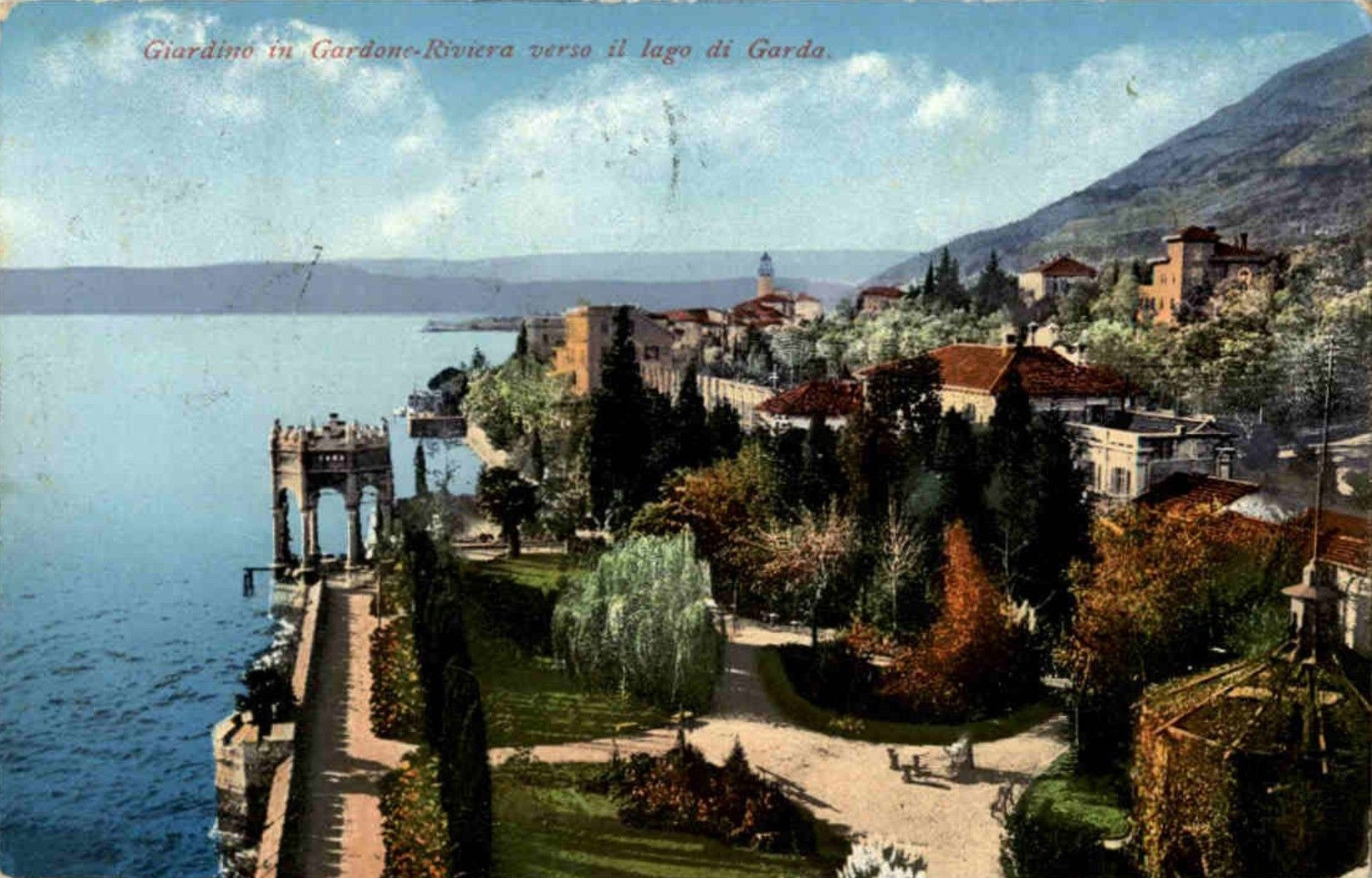VILLA ITOLANDA, FORMERLY VILLA ANNA, GARDONE RIVIERA
Villa Anna, today known as Itolanda, once hosted Paul Heyse, a poet and playwright and a Nobel Prize winner of 1910, who became inspired by and dedicated several of his pieces to Lake Garda.
WORLD WAR I
The outbreak of the First World War ends the period of Belle Époque in Gardone. The fact that Germans and Austrians stand on the opposite side in the conflict leads to national confiscations of properties and their subsequent sale at multiple auctions. The Cargnacco estate was sold to Gabriele D’Annunzio for 130,000 liras.
Arturo Hruska, the dentist of popes and emperors, was one of the few who managed to keep his property during the war. He bought it in 1903 and built an impressive villa together with a botanical garden of 10,000 m2, which he designed himself. The garden may be visited to this day. After the war, following general expropriation, Hruska repurchased his estate for 50,000 liras. All Austrian proprietors had to undergo the same process to regain ownership of their properties.
Following the end of the war, together with Mario Ferrari, a pharmacist, Hruska became a champion of the preservation and further improvement of Gardone’s parks, where one can still admire specimens of subtropical trees such as camphor, Cashmere cypress and a great number of palms. (Arturo Hruska will be mentioned later on in the text).
The years following the end of the war mark the time of a serious economic and social crisis. Beginning in 1925, the town showed alarming signs of decline, which prompted the officials to start promoting tourism, and thanks to the presence of D’Annunzio and transformation of Cargnacco (Wimmer’s house) into Vittoriale degli Italiani by Gian Carlo Maroni, the town came back to life.

Image: Old postcard, Edition Photoglobe, Zurich, PZ, delcampe.net/it

